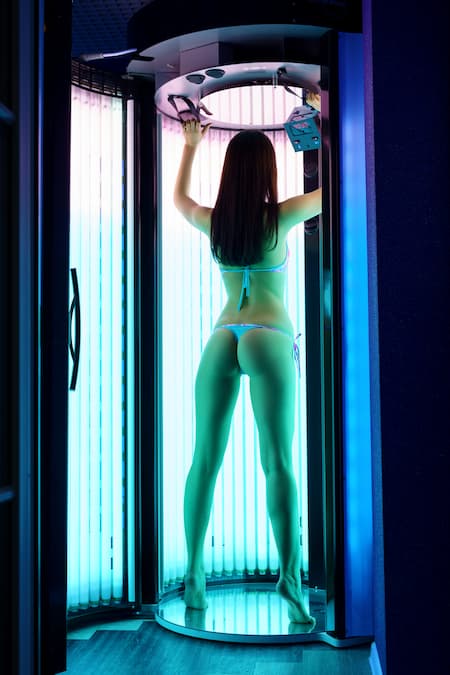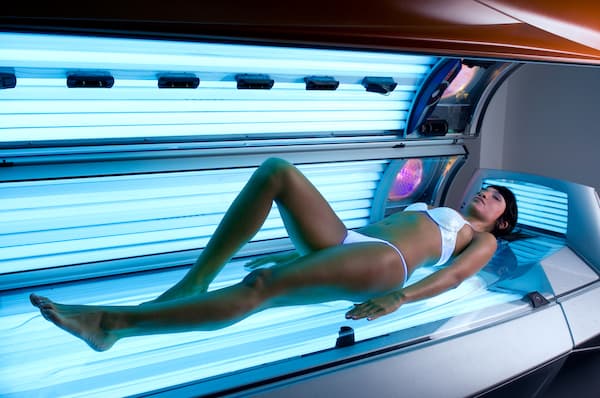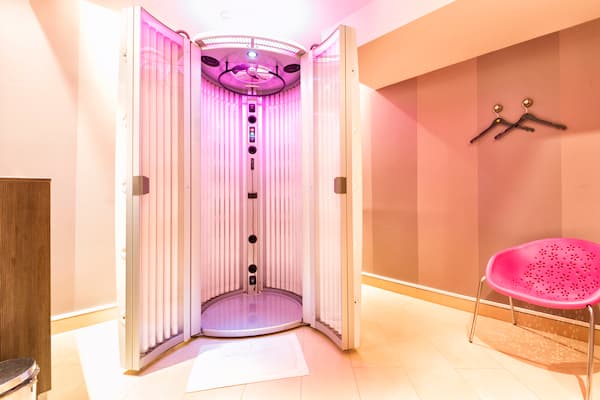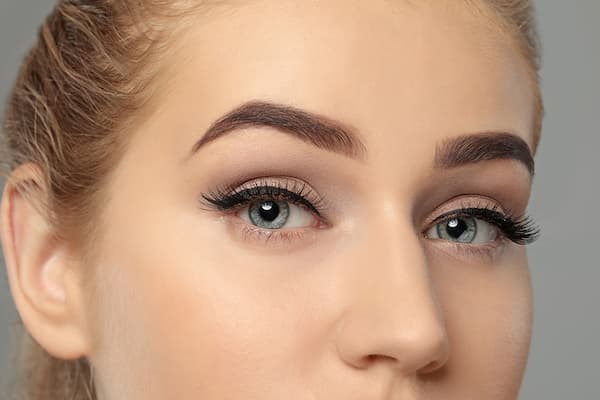Stand Up Tanning Bed vs Lay Down Bed: Which Is Best?
When you walk into a tanning salon, and you’re faced with the decision between a stand up tanning bed vs lay down tanning bed, what should you choose? Is there a difference between the effectiveness of the beds? We’re going to answer those questions in this post!
When used appropriately, tanning beds can provide a safe and controlled way to get an attractive tan without having to spend so much time in the sun.
They’re especially helpful if you need to get a natural-looking tan when it’s the middle of winter and you’re headed somewhere tropical for vacation.
There are a lot of benefits to using indoor tanning equipment when it’s done safely!
You’ll usually find two main types of tanning beds in most salons: stand-up and lay-down. Each type offers different advantages and disadvantages.
In this post, we’ll cover both types of tanning beds and will compare the two so that you can make an informed decision about which one is right for you.
Stand Up Tanning Bed Vs Lay-Down Tanning Bed
Both types of beds provide an efficient way to get a tan, but they have some important differences.
Stand-up tanning beds are tall and narrow. You’ll stand in the bed while tanning, and the booth typically has support bars above your head to hold onto while the lamps tan your body.
Stand-up tanning beds are more efficient than lay-down beds because the bulbs are higher wattage. Standing beds provide a more even tan since you’re standing the entire time and don’t have your backside closer to the UV light than your front side.
Standing also allows you to keep all areas of your body exposed to the light UVA and/or UVB light.
Lay down tanning beds, on the other hand, are typically wider than stand-up beds, and you’ll lay down inside the bed. This type of bed is usually less efficient than a stand-up bed because it takes longer to tan.
It might also be uncomfortable for some people to lie in the same position for a long time.
Let’s look at these in more detail individually!

Stand-Up Tanning Bed
A stand-up tanning bed is a large, vertical tanning booth that has been designed to allow you to stand up while tanning.
This type of bed is usually equipped with powerful lamps that emit UVA and UVB rays, more powerful than the lay-down bed. Stand-up tanning beds are often preferred by people who have limited time or who want to get an all-over tan quickly.
Advantages
One of the main advantages of stand-up tanning beds is that you can get a more even tan.
Since the process is faster than lying down in a traditional tanning bed, this is the best option for someone who isn’t lying in the tanning bed for relaxation. Stand-up tanning beds are ideal for those who are short on time.
Disadvantages
The main disadvantage of stand-up tanning beds is that they can be uncomfortable for some people.
Since you’ll have to stand for the duration of the tanning session, this can be uncomfortable if you have lower back or leg problems. Stand up tanning sessions can be a little shorter sessions than the lay down option, but you could still be standing for 10-15 minutes, depending on the bed.

Lay Down Tanning Bed
A lay-down tanning bed is a horizontal unit that is designed to allow you to lie down while tanning.
These beds are also equipped with powerful lamps that emit UVA and UVB rays, usually at lower levels than the higher levels of a stand up bed. Lay down tanning beds aren’t just a good way to get a tan; a lot of people enjoy them because you can relax your entire body while tanning.
Advantages
As mentioned, one of the main advantages of lay-down tanning beds is that they are more comfortable than stand-up beds.
Since you’re lying down, this can be more comfortable for people with back or leg problems. Lay down tanning bed sessions are typically less expensive than vertical tanning beds since they take longer and the beds are not as high-pressured or strong.
Disadvantages
The process is usually slower than standing up in a stand-up tanning bed, so it may take longer to get an all-over tan.
If you have a fair skin type that burns easily, you should definitely spend less time in the tanning bed or use a high-pressure bed (explained below). So lay down beds may not be the best choice for you to achieve a darker tan with sensitive skin.

Tanning Bed Levels
All tanning beds have a level, which refers to the amount of ultraviolet (UV) radiation emitted by a tanning bed. Level 1 and Level 2 tanning beds have low-pressure bulbs. Levels 3, 4, 5, and 6 have medium to high-pressure bulbs.
The higher the number, the more intense the UV radiation. Also, as the level goes up, so does the wattage of the bulbs and the number of minutes you’ll be allowed to stay in the bed goes down.
While a lower level bed may seem safer, you can get your desired results faster and with less harmful UVB rays in a more powerful bed like a vertical bed.
High pressure beds offer a different ratio of UVB to UVA rays. Lower amounts of UVB rays with increased amounts of UVA rays reduce the likelihood that you’ll burn and they are the specific rays that bronze your skin.

FAQs
How long should you go in a stand up tanning bed?
If you’re new to tanning or the stand-up tanning booth, the amount of time you’ll be in there will be less than half the regular tanning time.
Usually, an experienced tanning professional will recommend 4 minutes or less. After you’ve built up a base tan, the time can increase incrementally until you get to 10 or 15 minutes.
Which tanning bed gives the best results?
A medium pressure bed, like a level 3, will give you better tanning results than a level 1 or 2 bed.
A level 4 or 5 will give you an extremely fast tan with almost no chance of burning because of the almost nonexistent UVB rays at that level or pressure.
What is the best position for a tanning bed?
The standing position is best for an even tan. If you have to use a lay down bed, be sure to keep your legs and arms spread to avoid tan lines and allow the rays to reach more parts of your body, like your inner legs and your sides.
What helps you tan faster in a tanning bed?
Tanning accelerators in the form of tanning lotion are the best way to tan faster in a tanning bed. Tanning lotion is a good alternative to longer-lasting sessions and can also keep your skin hydrated and healthier.
How many days a week should I tan in a tanning bed?
Most salons will recommend that you tan three days a week until you have a tan established and then two days a week to maintain that tan.
This will also depend on the level of bed you’re using. If you’re using a lower level, you may need to continue three sessions a week to keep your skin tan.
How many times do you see a difference in a tanning bed?
Depending on your skin type, you may see a tan start to develop with the first session. Otherwise, you should see results increasing between 3-5 sessions.
Conclusion
When it comes to a stand-up tanning bed vs lay-down tanning bed, both have their advantages and disadvantages, but the choice comes down to more than just a matter of personal preference.
When choosing which type of tanning bed is right for you, it is important to consider your lifestyle, budget, comfort level, and most importantly, your skin type.
Salon staff will be able to give you advice on the best way to tan for your skin type and tanning abilities.
Other Posts You Might Like:





